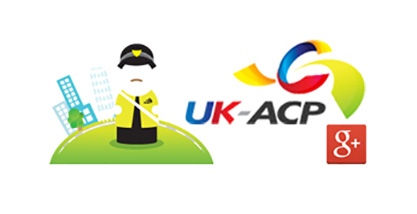Travelling Through UK Airports With Pets
Posted on : 02-02-2016 12:42
Travelling from UK Airports with your Pets.
For those planning to relocate abroad it seems there are millions of things to do and sort out.
It may be onerous enough a task organising travel for all the family members without the realisation that you have to find out what to do if you are planning to take your pet with you.
We’ve put together a guide which will help you along the way and hopefully make the whole thing less stressful for you and your pet.
Before you go
In recent years it has been made easier with the relaxation of some quarantine laws to travel to Europe with your pet although there are still many countries that follow strict rules on the import and quarantining of animals.
For this reason it is essential that you check your destination country’s regulations before you go. And as quarantine for some animals can still be for up to six months in some countries you may need to begin preparations some months before you travel.
How does your pet travel?
One of the first things to consider is whether your pet travels well. What we mean by that is – if your animal is unaccustomed to travelling in a carrier or other means of restraint inside a moving vehicle, now’s the time to get them used to it.
An animal which is unused to being restrained or carried may be prone to feelings of panic and stress when suddenly confronted with a cage or carrier box of any kind. Make doubly sure that the carrier, cage or harness which you use to transport your pet to the airport is strong enough to contain the animal.
In the case of cats, birds or other small animals it may be advisable to place a cover over the carrier in order to keep them calm on the journey. Another point to consider is food and water, both when you get to your destination and for the journey.
On short haul flights the airline or holiday company will often insist your pet be fed and watered prior to the journey but not during. For long haul flights you will need to establish how and when your pet is be fed and watered and if necessary, provide your own food.
Pack some of your pet’s regular food for when you get to your new home to avoid any upset to the animal’s digestion and to provide continuity.
Veterinary considerations
Secondly, you need to look at all the veterinary requirements that enable your pet to be imported into another country. Different countries have different requirements and we will look at these later in this article.
In general though, consider whether your pet is prone to stress. Many animals when placed into a strange environment can become panicked. If this is the case with yours then it would be a good idea to discuss with your vet ways to calm your pet to allow it to cope with the journey.
If your animal is taking any long term medications or if it has special dietary needs make sure you have enough of these to last until you reach your destination and make sure the airline carrier is made aware.
Your vet may agree to write you a prescription for regular medications so that you can show this to your new vet.
Vaccinations
Finally, arrange for all your pets vaccinations to be up to date and also make appointments for your pet to receive any additional vaccinations, flea and worming (tapeworm treatment within 5 days of travelling is usually compulsory) treatments which are specific to the country of your destination.
Two of the biggest concerns for countries which allow the importation of pet animals are rabies and Avian Flu, both of which can affect humans. Rabies vaccinations must be administered 21 days before travel.
Remember also to arrange appropriate quarantine accommodation if deemed necessary and locate, and register with if possible, an approved vet in your new country.
With regards to paperwork, all pets travelling within the European Union area must be vaccinated, microchipped and have a pet passport, (the EU Vet Health Certificate) which will state the microchip and vaccination details of the animal and will contain a vet’s letter declaring the animal to be in good health.
Travelling to other countries
In general, find out which vaccinations and treatments are required and appropriate for your destination. Your local vet will be the best source of information on this.
The United States
There are many varying rules and processes for importing animals into America and these can sometimes vary from state to state, particularly depending upon what kind of animal you are taking with you.
A good source of reference before you travel is the United States Department of Agriculture website which gives very detailed information for different species requirements.
Australia
The Australian government have very strict rules indeed on the importation of live animals. In general, dogs, cats and horses can be brought in to Australia subject, of course to their strict quarantine laws.
Other pets like hamsters, ferrets, guinea pigs and caged birds cannot. Before travelling to Australia you should ensure that your pet dog or cat is allowed as some breeds are banned, particularly in the case of dogs.
As in the UK the banned breeds are the so-called fighting and pit bull type breeds. You must apply to the Australian Quarantine & Inspection Service for a permit to bring your pet in to the country.
China
A microchip is not necessary when importing pets into China but it is recommended that your pet has one anyway as a security measure. Vaccinations and health certificates are compulsory. Different states within China have different quarantine rules.
Ireland
The rules for taking pets to Ireland are exactly the same as for pets coming into any part of the EU. Microchipping, vaccinations and the pet passport are all essential requirements.
Always do your homework!
Whichever country you are relocating to with your beloved pets the golden rule is to CHECK, CHECK and CHECK! Do your research carefully and thoroughly to avoid falling foul of rules and regulations or you could find your pet being refused entry.
Some countries will require you to have an import permit for your pet. The Department for the Environment, Food and Rural Affairs (Defra) operates an export helpline on +44 (0)20 7904 6347 +44 (0)20 7904 6347 or Fax +44 (0)20 7904 6395.
Which Airline?
Now that you have completed all your preparations another thing you need to look at is which airlines are best for transporting pets. Some are better than others and if the journey is going to be a long one then you need to know your pet is in the best possible hands.
The best airlines are said to be KLM, Lufthansa, British Airways and Virgin Atlantic but by all means research other airlines too as they all have different policies and they all charge different fees. In all cases make sure you reserve a place for your pet well in advance of your journey with the airline of your choice.
British Airways
BA will carry pets but they must be in the cargo hold unless they are a registered assistance dog. Double check about this though and make sure the airline knows if you travel with an assistance dog.
Assistance dogs travel free of charge with you in the cabin. You must call BA at least seven days in advance to book your assistance dog on the flight.
Their contact number is 0344 493 0787, or 0845 700 7706 (minicom) if you have a hearing or speech impediment. If your pet is not an assistance pet you will be able to complete an online booking form through the BA website.
KLM
KLM will allow small cats and dogs (up to a maximum weight of 8kg including the carrier) in the Economy Class cabin and in Business Class on most European flights.
Larger cats and dogs (up to a maximum weight of 75kg including carrier) can travel as check-in baggage. Larger animals must of course be carried as freight cargo.
Virgin Atlantic
Virgin Atlantic will take cats and dogs on certain flights; check with them to see which destinations this applies to. VA even has a ‘frequent flyer’ programme which allows animals to receive gifts such as a ‘welcome aboard’ pack full of pet goodies. It may be worth asking about this even if you are only going to be flying once!
Lufthansa
Lufthansa accepts small cats and dogs (maximum weight 8kg including the carrier) in the cabin but larger animals must travel in the cargo hold.
Qantas Airways
Your pet must be booked in through Qantas Freight at the same time as you book your own seat if you want your pet to travel on the same flight.
As usual, all except service dogs are required to travel in the hold. Qantas though describe themselves as pet-friendly. The booking for your pet must be made through QantasFreight online and you can do this seven days a week.
Other Airlines
Please note that if you are travelling to Europe using one of the popular low-cost UK airlines be aware that none of them will allow pets to travel in the cabin. Here in brief are the rules for some of them:
Flybe will carry pets in the cargo hold on domestic routes only; they do not carry animals at all on international routes.
EasyJet and Ryanair do not transport animals at all.
Monarch will carry pets in the cargo hold but only on Mondays to Fridays and only up to a maximum of six animals per flight. Monarch’s animal reception centres are as follows:
London Gatwick (Animal Air Care) is open Mon-Fri, 06.00-22.00, Sat, Sun & bank holidays, 06.00-19.00. To make a booking for your pet telephone 0845 680 9002.
Manchester (Pet on Jets) opens Mon-Fri. 05.00-22.00, Sat. 05.00-16.00.
Thomson will carry pets in the cargo hold but you need to contact them first via their Cargo Department on 0203 4327828. Or you can fill in an online booking form at www.aiapets.com.
Germanwings will carry pets in the cabin only but only of course in a suitable approved pet carrier and up to a maximum weight of 8kg.
Iberia Airlines also accept pets in the cabin, subject to weight limits as previously outlined for other carriers and, again larger animals travel in the cargo hold. Bookings for Iberia are usually made through your travel agent.
What to do at the Airport
Some UK airports have animal reception centres where you can deliver your pet prior to the journey and where they and the appropriate accompanying paperwork will be inspected and cared for. Not all airports are so well equipped however, so please take this into consideration when arranging your flight.
Heathrow
The Heathrow Animal Reception Centre (HARC) is a short distance from the airport itself and staff are responsible for transporting animals to and from the airport.
Gatwick
Gatwick Airport allows assistance dogs in the terminal buildings but all others must be checked in via their Animal Centre where there is 24-hour veterinary advice available. Parking is available directly outside the Reception centre.
Manchester
Manchester Airport does not have a dedicated animal reception centre but facilities are dependent on which airline you are using.
If in any doubt about how to get your pet aboard a flight it’s always best to contact the airport customer services desk directly.
Why not let someone else do all the hard work?
The conclusion to all this is that there are always fees for carrying your pet aboard an airline and these can be variable and expensive. There are also different rules and varying facilities at airports.
The answer for you could be to make use of one of the many specialist animal relocation and transport companies. These will do all the hard work for you, often including collecting your pet and delivering them to the airport, they will take care of your pet right up to the point of boarding the aircraft, they will also ensure that your pets vet checks are up to date and correct.
They will also of course ensure your pet is fed and watered and in good condition to travel. This is not an exhaustive list and the services and fees offered by pet transport companies will be variable.
For this reason be sure to check out as many companies as possible if this is the route you plan to take. There are many reputable companies on the web. A good place to start would be PetAir UK. Why is this a good place to start? Because it’s owned and run by fully qualified veterinary surgeons.
Taking your pet abroad with you can be a daunting task but if you research carefully beforehand and undertake plenty of planning and preparation it needn’t be too difficult.














